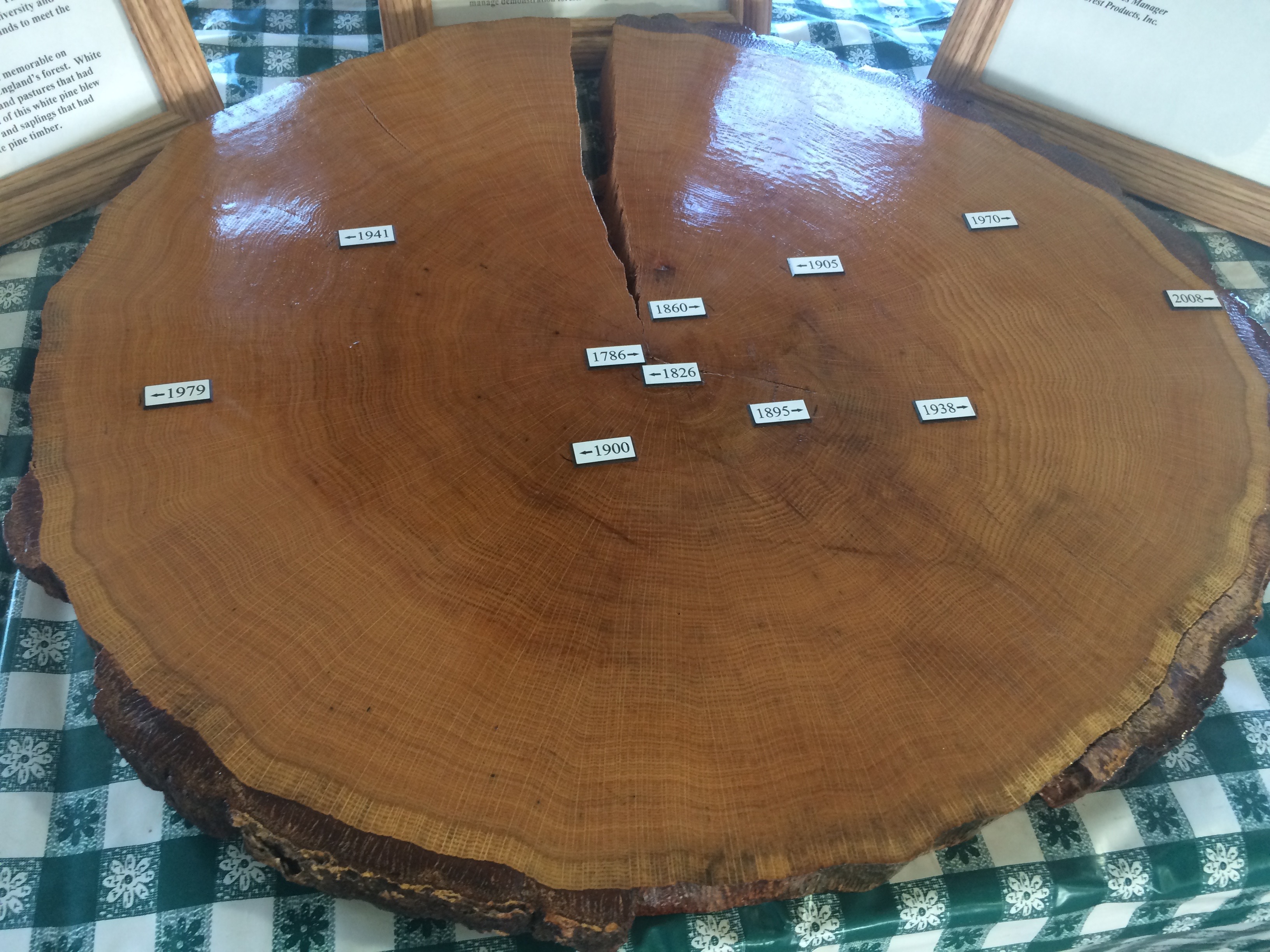Dalmatian90
Addicted to ArboristSite
Little wood porn for y'all while I sit here nursing the chest cold I came down with last night...
Took a quick walk around a local farm/forestry show yesterday...not sure if I hadn't seen this prop from the local large sawmill (Hull) or it just never clicked with me before...
The acorn started growing in 1786.
The tree was logged in 2008 -- 222 years later.
I've cut down oaks this size that wouldve barely qualified for membership in AARP!
It grew in Union, Conn. which was the last area of the state to be organized into a town, in 1734. While it was always among Connecticut's least populated towns so there wasn't as much land cleared for agriculture as other places, it is also remarkable it survived the 19th century charcoal industry. Charcoaling then would consist of cutting and piling up all the wood from about an acre (roughly 120' radius), covering with dirt, then burning it -- adjusting openings in the dirt to control the airflow. This industry was quite common in the uplands of my area.
(Union had modern charcoal kilns still in business until the early 1990s.)
When it was 152 years old, the 1938 Hurricane came along and released the tree -- but if you notice the right side grew faster than the left immediately after '38 so you can even tell which side which opened up the most.

Took a quick walk around a local farm/forestry show yesterday...not sure if I hadn't seen this prop from the local large sawmill (Hull) or it just never clicked with me before...
The acorn started growing in 1786.
The tree was logged in 2008 -- 222 years later.
I've cut down oaks this size that wouldve barely qualified for membership in AARP!
It grew in Union, Conn. which was the last area of the state to be organized into a town, in 1734. While it was always among Connecticut's least populated towns so there wasn't as much land cleared for agriculture as other places, it is also remarkable it survived the 19th century charcoal industry. Charcoaling then would consist of cutting and piling up all the wood from about an acre (roughly 120' radius), covering with dirt, then burning it -- adjusting openings in the dirt to control the airflow. This industry was quite common in the uplands of my area.
(Union had modern charcoal kilns still in business until the early 1990s.)
When it was 152 years old, the 1938 Hurricane came along and released the tree -- but if you notice the right side grew faster than the left immediately after '38 so you can even tell which side which opened up the most.

























































